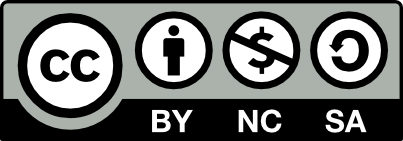Checking for non-preferred file/folder path names (may take a long time depending on the number of files/folders) ...
This resource contains some files/folders that have non-preferred characters in their name. Show non-conforming files/folders.
This resource contains content types with files that need to be updated to match with metadata changes. Show content type files that need updating.
| Authors: |
|
|
|---|---|---|
| Owners: |
|
This resource does not have an owner who is an active HydroShare user. Contact CUAHSI (help@cuahsi.org) for information on this resource. |
| Type: | Resource | |
| Storage: | The size of this resource is 10.9 KB | |
| Created: | Nov 22, 2023 at 11:11 a.m. (UTC) | |
| Last updated: | Nov 27, 2023 at 2:13 p.m. (UTC) (Metadata update) | |
| Published date: | Nov 27, 2023 at 2:13 p.m. (UTC) | |
| DOI: | 10.4211/hs.c874f49441144c1791d717c528092c8e | |
| Citation: | See how to cite this resource |
| Sharing Status: | Published |
|---|---|
| Views: | 1671 |
| Downloads: | 13 |
| +1 Votes: | Be the first one to this. |
| Comments: | No comments (yet) |
Abstract
Increased wildfire activity in the western US can lead to detrimental cascading effects to water quality. After fires, burned areas may experience significant runoff-induced erosion and sediment transport into rivers and reservoirs, which could rapidly overwhelm existing drinking water treatment plants. This paper couples an assessment of wildfire risk with an evaluation of water utility preparedness to understand where key fire-related drinking water vulnerabilities exist. Wildfire risk assessments were constructed and expanded from a commonly used methodology co-developed between researchers and water managers (Edel et al., 2002), to understand drinking water impacts on water quality after wildfires. A water utility preparedness index was created for this study using publicly available information to contextualize how well utilities may be able to respond to water quality degradation after fires.
Results indicate that 11% of utilities studied (10% of the population served) were underprepared for fire and 22% of watersheds used were at greater risk of wildfire (9% of the population served). However, over three-quarters of utilities (76% of the population served) showed a moderate risk of fire and some need for improved fire preparedness. information developed here could provide a useful framework from which utility managers can better assess their likely wildfire risk and preparation plans.
Subject Keywords
Coverage
Spatial
Content
Related Resources
| This resource updates and replaces a previous version | Robichaud, P. (2023). Drinking Water Under Fire: Water Utilities’ Vulnerability to Wildfires in the Pacific Northwest, HydroShare, http://www.hydroshare.org/resource/75d565f76a9c4f04990b1538201010d1 |
Credits
Funding Agencies
This resource was created using funding from the following sources:
| Agency Name | Award Title | Award Number |
|---|---|---|
| NASA | NASA Water Resources Program | 80NSSC19K1197 |
Contributors
People or Organizations that contributed technically, materially, financially, or provided general support for the creation of the resource's content but are not considered authors.
| Name | Organization | Address | Phone | Author Identifiers |
|---|---|---|---|---|
| Julie Padowski | Washington State University | WA, US | 5093358539 |
How to Cite
This resource is shared under the Creative Commons Attribution-NoCommercial-ShareAlike CC BY-NC-SA.
http://creativecommons.org/licenses/by-nc-sa/4.0/

Comments
There are currently no comments
New Comment